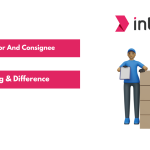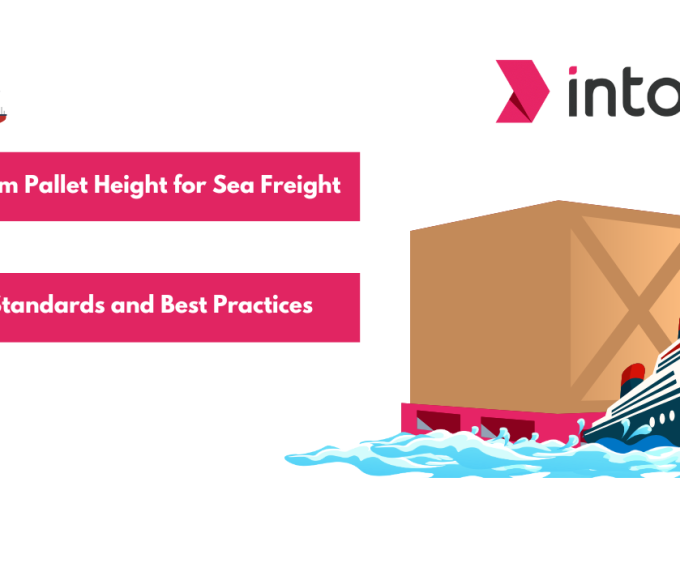The 40-foot high cube container is amongst the most commonly used containers in logistics because of its extra height which allows for more cargo space. Therefore, understanding the cube container dimensions and CBM (Cubic Meter) calculation of a 40-foot high cube container is essential for efficient logistics planning.
There are essentially two kinds of containers used for moving cargo, i.e. Standard Containers and High-cube containers. A 40-foot high cube container is 9 feet 6 inches tall compared to the 40-foot standard container, which is 8 feet 6 inches tall. This extra height significantly increases the container’s volume capacity making it an ideal choice for transporting bulky or voluminous goods.
This guide will teach you how to accurately calculate a 40-foot high cube container’s dimensions for cargo loading and shipping and explore the internal and external dimensions of the container, its advantages along with its types and variations.
Let’s get started!
Dimensions of a 40-Foot High Cube Container
Due to its increased height, a 40-foot-high cube container offers additional space. This makes it an essential asset in the shipping and logistics industry. The extra space makes it particularly useful for efficiently transporting larger or more voluminous cargo.
Capacity Comparison: 40-Foot High Cube Containers VS 40-Foot Standard Container
| External Dimensions | ||
| Dimension | 40-Foot Standard Container | 40-Foot High Cube Container |
| Length | 40 ft / 12.192 m / 480 in / 1,219.2 cm | 40 ft / 12.192 m / 480 in / 1,219.2 cm |
| Width | 8 ft / 2.438 m / 96 in / 243.8 cm | 8 ft / 2.438 m / 96 in / 243.8 cm |
| Height | 8 ft 6 in / 2.591 m / 102 in / 259.1 cm | 9 ft 6 in / 2.896 m / 114 in / 289.6 cm |
| Internal Dimensions | ||
| Length | 39 ft 6 in / 12.032 m / 474 in / 1,203.2 cm | 39 ft 6 in / 12.032 m / 474 in / 1,203.2 cm |
| Width | 7 ft 8 in / 2.352 m / 92 in / 235.2 cm | 7 ft 8 in / 2.352 m / 92 in / 235.2 cm |
| Height | 7 ft 10 in / 2.386 m / 94 in / 238.6 cm | 8 ft 10 in / 2.698 m / 106 in / 269.8 cm |
Door Opening Specifications
The door opening of a 40-foot high cube container is designed to facilitate easy loading and unloading of cargo:
Width:
- Feet: 7 feet 8 inches
- Meters: 2.340 meters
- Inches: 92 inches
- Centimeters: 234 centimeters
Height:
- Feet: 8 feet 5 inches
- Meters: 2.585 metersInches: 101 inches
- Centimeters: 258.5 centimeters
The larger door cube container fits oversized cargo, making it easier to handle and move goods during loading and unloading.
Calculating the Cargo Bearing Capacity
Understanding a container’s cargo-bearing capacity is crucial for efficient logistics and ensuring the safety of goods during transit. This involves understanding the payload capacity and tare weight while considering the 40-foot high cube container CBM (Cubic Meters) to optimize space utilization.
Understanding Payload Capacity and Tare Weight
Payload Capacity: Maximum weight of cargo that a container can safely carry. It is calculated by subtracting the container’s tare weight from its maximum gross weight.
Payload capacity helps ensure the container is not overloaded, which could lead to logistical issues or safety hazards.
Tare Weight: This is the weight of the empty container, including the container’s structural weight without any cargo inside.
This is an essential factor in calculating the net weight of the cargo that can be loaded.
Maximum Gross Weight: This is the total weight that a container can handle, including its tare weight and the weight of the cargo.
A 40-foot high cube container weighs around 30,480 kg (67,200 lbs).
Example:
Tare Weight of a 40-Foot High Cube Container: 3,940 kg (8,687 lbs)
Maximum Gross Weight: 30,480 kg (67,200 lbs)
Payload Capacity = Maximum Gross Weight – Tare Weight
30,480 kg – 3,940 kg = 26,540 kg (58,513 lbs)
Step-by-Step Guide on Calculating the Cubic Meters (CBM)
“CBM” stands for cubic meters. Calculating the volume capacity of a 40-high cube container CBM is essential for determining its volume. It also helps in planning how much cargo can be loaded.
Follow these steps to calculate the CBM of your cargo accurately:
Step 1: Measure the Dimensions of Your Cargo
Length: Measure the length of the cargo in meters.
Width: Measure the width of the cargo in meters.
Height: Measure the height of the cargo in meters.
Measure the cube container dimensions at the longest points, including any packaging or pallets.
Step 2: Convert Dimensions if Not in Meters
If your measurements are not in meters, convert them to meters. Here are some common conversions:
- From centimeters to meters: Divide the measurement by 100.
- From inches to meters: Multiply the measurement by 0.0254.
- From feet to meters: Multiply the measurement by 0.3048.
Step 3: Calculate the Volume for Each Item
- Volume (CBM)= Length × Width × Height
- For example, if the length is 2 meters, the width is 2 meters, and the height is 1 meter:
- Volume (CBM)=2×2×1= 5 CBM
Step 4: Calculate the Total CBM for Multiple Items
If you have multiple items with the same dimensions, multiply the volume of one item by the total number of items:
- Total Volume (CBM)=Volume of one item (CBM)×Number of items
For example, if each item is 5 CBM and you have 10 items:
- Total Volume (CBM)=5 CBM×10= 50 CBM
If the items have different cube container dimensions, calculate the volume for each item individually and then sum them up:
- Total Volume (CBM)=Volume of item 1+Volume of item 2
Example Calculation:
Let’s calculate the CBM for a shipment of 5 rectangular boxes, each measuring 200 cm (length) x 200 cm (width) x 100 cm (height).
Convert the dimensions to meters:
- Length: 200 cm ÷ 100 = 2 meters
- Width: 200 cm ÷ 100 = 2 meters
- Height: 100 cm ÷ 100 = 1 meter
Calculate the volume of one box:
- Volume (CBM) = 2 m × 2 m × 1 m = 5 CBM
- Calculate the total volume for 5 boxes:
Total Volume (CBM) = 5 CBM × 5 = 25 CBM
By following these steps, you can exactly determine the cubic meters of your cargo, ensuring efficient use of space and cost-effective shipping. This allows for safe and optimized shipping logistics, reducing the risk of overloading and maximizing the efficiency of your shipping operations.
Alright, you’ve got the CBM calculation down—let’s see what kind of cargo can make the best use of these high-cube containers.
Types of Cargo Suitable for 40-Foot High Cube Containers
40-foot-high cube containers are suitable for all types of dry cargo. They are particularly appropriate for transporting light, voluminous, and overheight loads. The container has a tare weight of approximately 3,900 kilos and a length of 12.04 meters.
Suitable for Tall, Heavy, or Extra-Length Cargo
- Extra Height: 40-foot high cube containers can accommodate taller items, up to a maximum of 2.70 m tall, without disassembly or special adjustments.
- Increased Volume: The larger internal volume makes it ideal for voluminous items, providing ample space for secure transportation.
- Flexibility: These containers can handle extra-length cargo by optimizing vertical space, reducing the need for multiple shipments.
- Protection: Offers better protection for oversized cargo, reducing the risk of damage during transit.
Pallet Storage Capacity and Arrangement
The extra height allows for more efficient pallet stacking, optimizing the use of space and potentially reducing shipping costs. There are two types of Pallets:
- Standard American Pallet Sizes: The 40-foot-high cube can accommodate 21 standard American-sized pallets of 40″ x 48″ due to the increased vertical space.
- Euro Pallet Sizes: European palettes are 1.2m x 0.8m, which means the 40-foot-high cube can accommodate up to 25 Euro pallets.
Versatility in Handling Different Types of Goods
- Light and Voluminous Loads: These are ideal for transporting lightweight goods that take up much space. These may include textiles, raw materials, or consumer goods.
- Overheight Loads: These are perfect for cargo that exceeds the height limitations of standard containers, such as machinery, vehicles, and large furniture.
- Diverse Cargo Types: Capable of handling a wide range of goods, including industrial equipment, household items, retail products, construction materials, and agricultural products.
- Adaptability: It can be easily adapted with modifications, such as refrigeration units for perishable goods or additional padding for fragile items.
Speaking of different types of goods, did you know there are various types of 40-foot-high cube containers designed to handle specific needs? Let’s explore!
Types and Variations of 40-Foot High Cube Containers
40-foot-high cube containers are available in various types and variations to meet different shipping needs. Each type offers unique features and advantages, making them suitable for specific types of cargo. Here are some of the common types and variations:
1. 40-Foot High Cube Double Doors Container
- Description: Double-door containers, also known as tunnel containers, have double doors at each end. The double doors have a lock box with 10 vents for air ventilation.
- Use Case: Ideal for transporting bulky and oversized goods. Double Doors containers allow easy access to loading and unloading goods.
2. 40- Foot Flat Rack High Cube Container
- Description: Contains collapsible sides and ends, offering a flatbed-like surface for transporting oversized and heavy cargo.
- Use Case: Used for large machinery, vehicles, construction materials, and other bulky items.
3. Refrigerated (Reefer) High Cube Container
- Description: Equipped with a refrigeration unit to maintain a controlled temperature throughout shipping.
- Use Case: Perfect for perishable goods, including food, pharmaceuticals, and other temperature-sensitive items.
4. Insulated High Cube Container
- Description: Designed with insulating materials to maintain a stable internal temperature without active cooling.
- Use Case: Suitable for goods that need protection from extreme temperature fluctuations, such as certain chemicals or food products.
5. Open Top High Cube Container
- Description: Features a removable top, allowing for easy loading and unloading of oversized cargo.
- Use Case: Ideal for bulk cargo, machinery, and other items that cannot be loaded through standard container doors.
6. High Cube Pallet-Wide Container
- Description: Slightly more comprehensive than standard high cube containers, designed to fit more Euro pallets side by side.
- Use Case: Optimizes space for palletized goods, commonly used in Europe for efficient loading and unloading.
7. Side-Opening High Cube Container
- Description: Equipped with doors that open along the side of the container, allowing for more effortless loading and unloading of long or bulky items.
- Use Case: Ideal for construction materials, pipes, and other long items that are difficult to load through standard end doors.
Now that we know the types and variations, you might be wondering what condition of the container to go for. Let’s compare your options!
Comparison: One-Trip, Used, and New Container Options
You have three main options when choosing a 40-foot-high cube container: one-trip, used, and new containers. Each option has its advantages and considerations. Here’s a detailed comparison to help you decide which type best suits your needs:
| Criteria | One-Trip Containers | Used Containers | New Containers |
| Definition | Containers that have made only one trip from the manufacturer to the destination, are essentially new but with minor wear. | Containers that have been previously used for multiple shipping cycles, often show signs of wear and tear. | Brand new containers directly from the manufacturer, have never been used for shipping. |
| Price | Typically more expensive than a used container but less than a brand new one. Offers good value for quality | Most affordable option Prices vary based on condition and age | Most expensive option Premium price for a brand-new unit |
| Durability | Very high, almost as durable as new Minimal maintenance is required initially | High, but may require repairs and maintenance Durability depends on prior use and maintenance history | Highest durability Long lifespan with minimal initial maintenance required |
| Usage | Suitable for long-term use Ideal for storage or shipping where appearance matters | Suitable for budget-conscious buyers Ideal for storage, modifications, and less demanding shipping needs | Ideal for high-end, long-term us Suitable for sensitive cargo, high-value storage, or aesthetics-focused applications |
| Environmental Impact | Lower than new containers as they reuse existing units Reduces waste and resource consumption | Environmentally friendly and extends the life of existing containersReduces demand for new manufacturing | Higher impact due to resource use in manufacturing Best for specific needs where new is essential |
Selecting the Appropriate Container
Selecting the appropriate container involves balancing various factors such as the intended use, condition, size, customization needs, durability, cost, and regulatory compliance. By carefully evaluating these aspects, you can choose a container that best meets your specific requirements and ensures a smooth and efficient operation.
For a detailed analysis of appropriate cargo please contact Intoglo. Containers are available as per the business requirements, ensuring you get the most suitable solution for your shipping requirements.
Key Considerations:
| Factor | Considerations |
| Purpose | Shipping, storage, and modification projects |
| Container Condition | New, one-trip, used |
| Size and Dimensions | Standard vs. high cube, 20 ft vs. 40 ft |
| Customization Needs | Modifications, purpose-built features |
| Durability and Material | Corten steel, structural integrity |
| Cost Considerations | Initial cost, ongoing maintenance |
So you’ve got a grasp of the options available—let’s break down why a 40-foot high cube container might be the best choice for you!
Benefits of 40-Foot High Cube Containers
40-foot-high cube containers offer numerous benefits for transportation and storage needs. Some of the expected benefits are:
- Larger Volume: A key benefit of the 40-foot high cube (HC) containers is their larger volume capacity without additional cost. Since 40-foot and 40-foot HC containers usually share the same ocean freight rate, you can accommodate more cargo in a 40-foot HC container for the same price, optimizing shipping efficiency and reducing overall logistics expenses.
- Versatile Use: They are suitable for a wide range of cargo, including light, voluminous, and overheight loads. This makes them ideal for shipping textiles, furniture, machinery, and even vehicles.
- Durable Construction: Made from high-quality steel, these containers are made to withstand harsh conditions, ensuring the safety and integrity of the cargo.
- Weather Resistance: Equipped with weatherproof seals and ventilation to protect against moisture, corrosion, and extreme temperatures.
Of course, no solution is perfect. Before you make your decision, let’s consider some of the potential pitfalls you might face.
Limitations and Challenges of 40-Foot High Cube Containers
While 40-foot high cube containers offer significant advantages in terms of storage and transportation, they do come with some limitations and challenges to consider. Here’s a breakdown of what you need to be aware of:
- Height Restrictions: The extra height may pose challenges in areas with low clearances, such as certain bridges, tunnels, or storage facilities.
- Specialized Equipment: Handling and transporting high cube containers may require specialized equipment that could increase logistics costs.
- Weight Distribution: Proper weight distribution is essential to avoid stability issues during transit, which may require additional planning and effort.
Conclusion:
40-foot high cube containers are highly versatile and helpful for various applications. Their increased height and volume make them ideal for transporting and storing light, voluminous, and over-height cargo. Whether you need them for shipping bulky machinery, storing large quantities of goods, or converting them into custom structures, these containers offer a robust and durable solution.
When choosing the right container for your needs, calculate CBM to determine the volume capacity of the container and consider factors such as the type of cargo, the condition of the container, size and dimensions, customization needs, durability, cost, and regulatory compliance. By carefully examining these factors, you can ensure that you choose a container that matches your business needs and delivers the best value for your investment.
If you need further assistance selecting the perfect container, feel free to contact industry experts at Intoglo. Get the right guidance that helps you make an informed decision!









Leave a comment